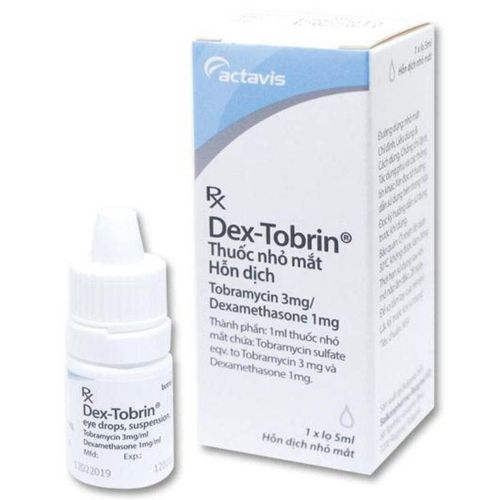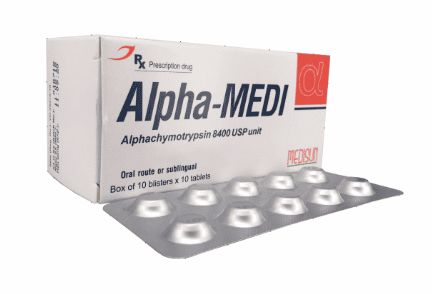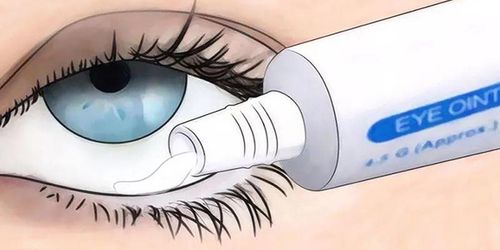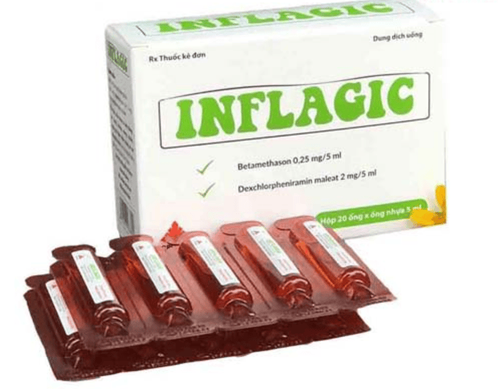This is an automatically translated article.
Fipharle-D drug belongs to the group of drugs in the treatment of eyes, ears, nose and throat with the main ingredient being Levofloxacin (Levofloxacin hemihydrate); Dexamethasone phosphate (Dexamethasone sodium phosphate). How is the specific use of the drug, please refer to the article below.
1. Uses and indications for using Fipharle-D
What is Fipharle? The active ingredient Dexalevo-drop is used in the treatment of steroid- and corticosteroid-responsive inflammatory eye conditions.
In addition, it is also used to treat infections and conjunctivitis caused by levofloxacin sensitive strains of bacteria such as:
Gram-positive aerobic bacteria such as Corynebacterium species, Staphylococcus aureus, Staphylococcus epidermidis, group streptococci C, F, and G, viridans streptococci or Streptococcus pneumoniae; Gram-negative aerobic bacteria such as Acinetobacter lwoffii, Haemophilus influenzae, Serratia marcescens. The drug is also applied to the treatment of conjunctivitis of the eyelids, conjunctiva of the eyeball, conjunctivitis and anterior part of the eyeball. Use steroids in the context of accepting the inherent risks of the drug to reduce edema and inflammation. In addition, Fipharle-D is indicated for use in cases of chronic anterior uveitis, corneal damage caused by chemicals, radiation, heat or foreign bodies.
When the risk of superficial bacterial infection of the eye is increased or there is a presence of some dangerous bacteria in the eye, it is necessary to prescribe a mixed drug with anti-infective ingredients.
On the other hand, the drug Fipharle-D is not allowed to be prescribed in the following cases:
People who have had a hypersensitivity reaction to quinolones, dexamethasone or other ingredients in the drug; People with dendritic keratitis (herpes simplex epithelitis) People with other viral infections of the cornea or conjunctiva; People with fungal infections, tuberculosis in the eyes, pyogenic infections.
2. Instructions for use and recommended dosage
2.1. Dosage The first two days, instill 1-2 drops in both eyes each time, 2 hours apart. Small 8 times a day; From day 3 to day 7 instill 1-2 drops in both eyes each time, 4 hours apart. Small 4 times a day; When the symptoms show signs of improvement, the frequency of instillation should be reduced. It is not recommended to discontinue use too soon; Store and clean the tip and solution carefully; Be careful not to let the tip of the dropper touch the eyelid, the area around the eye or any other object to avoid contamination; When instilling the drug, especially in infants and children, care should be taken to avoid absorption of the drug through the nasal mucosa, you should use your finger to press the tear bag in the inner corner of the eye for 2-3 minutes after drops to prevent medication from passing through the tear ducts into the nose; 2.2. How to use Before use it should take the first drop after opening the cap; In the case of using more than one medicine for the eyes, the medicines should be used 5 minutes apart, the medical product ointment should be used last; When using, it is necessary to strictly follow the instructions of the doctor about the dose, frequency and duration of taking the drug, do not increase the dose or stop taking it without consulting the doctor.
3. Some unwanted effects of the drug Fipharle-D
Common side effects (accounting for about 1-3% of users): Temporary visual loss, fever, eye problems, headache, mild burning of eyes, eye discomfort, sore throat, photophobia; Reactions to steroids: increased intraocular pressure (IOP) with increased risk of glaucoma; posterior subcapsular cataract; infrequent optic nerve damage and delayed wound healing; Secondary bacterial infections have occurred after the use of certain steroids and antibiotics; Fungal infections of the cornea are more likely to occur after long-term steroid use, so the possibility of fungal infection should be considered in any case of persistent corneal ulceration.
4. Notes to watch out for
Dexalevo-drop should not be injected under the conjunctiva or directly into the anterior chamber of the eye because Levofloxacin contained in Dexalevo-drop has the risk of making the eyes more sensitive to light exposure. Therefore, when using the drug, it is necessary to wear sunglasses and avoid direct light, thus helping to reduce discomfort; Beware of the possibility of fungal infection of the cornea following prolonged steroid use. If superinfection occurs, appropriate treatment should be sought.
5. Special circumstances
For pregnant women: There are no studies on the safety of Fipharle-D for pregnant women, so you should consult your doctor if you want to use it; Women who are breastfeeding: Components of the drug will be excreted in breast milk, so caution should be exercised when using the drug in this case; The drug will have a side effect of temporarily reducing vision, so it will affect the ability to drive and use machines, so it should not be used in these cases.
Please dial HOTLINE for more information or register for an appointment HERE. Download MyVinmec app to make appointments faster and to manage your bookings easily.













